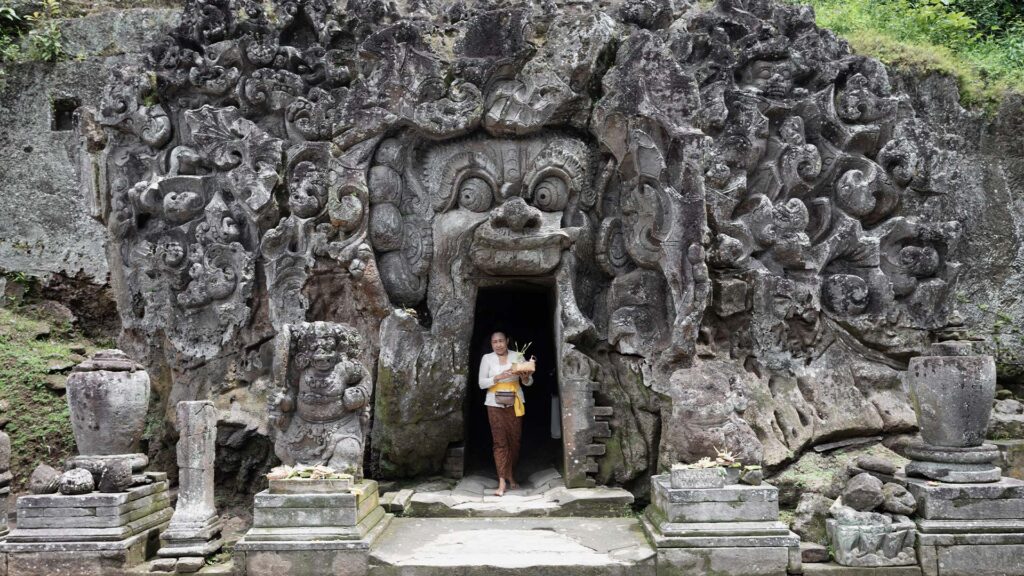- We are open every : MON - SUN : 6:00AM - 7:00 PM
- balidriverandtour12@gmail.com

Bali, a small yet spiritually rich island in Indonesia, has long captured the hearts of travelers, not just for its stunning beaches and lush jungles, but also for its deep-rooted spirituality. One of the most iconic labels Bali holds is the “Island of a Thousand Temples.” But what gives Bali this sacred identity, and what makes its temples so unique and significant?
In Bali, temples are not just places of worship they are woven into daily life. Every village features at least three main temples:
Pura Desa (for village matters)
Pura Puseh (for honoring ancestors)
Pura Dalem (dedicated to spirits and the dead)
Beyond communal temples, each Balinese family compound houses private shrines. It’s estimated that the island is home to over 20,000 temples hence the nickname.
Balinese Hinduism, an adaptation of Hinduism blended with local animism and ancestor worship, emphasizes balance and spiritual connection. This belief system encourages the creation of temples for nearly every aspect of life:
Water temples near lakes and rivers (e.g., Ulun Danu Beratan)
Mountain temples like Besakih Temple, known as Bali’s Mother Temple
Sea temples, such as the iconic Tanah Lot and Uluwatu, protect the island spiritually from ocean threats.
Each temple plays a role in maintaining cosmic harmony, known locally as Tri Hita Karana—the balance between humans, nature, and the divine.


Balinese temples are works of art, built with black volcanic stone, red brick, and intricate carvings. A typical temple layout includes:
Outer sanctum (jaba pisan) for the public and casual rituals
Middle sanctum (jaba tengah) for preparation and offerings
Inner sanctum (jeroan) where sacred ceremonies occur
Every design element carries meaning, from gate shapes symbolizing cosmic passage to towering meru shrines representing Mount Meru, the sacred mountain in Hindu cosmology.
Temples in Bali are more than still monuments—they are alive with color and devotion. Throughout the year, ceremonies fill temple courtyards with vibrant offerings, gamelan music, and traditional dance. Major festivals like Galungan, Kuningan, and Odalan (temple anniversary) bring communities together in celebration and spiritual reflection.
During Odalan, even the smallest temple bursts into life, adorned with penjors (decorative bamboo poles), incense, and flower offerings. Each temple has its own unique calendar, so there’s always a celebration happening somewhere on the island.
For travelers seeking more than a tropical getaway, Bali’s temples offer a glimpse into an ancient culture still vibrantly alive. Visiting places like:
Pura Luhur Uluwatu, where monkeys roam freely and the cliffside view is unmatched
Tirta Empul, known for its sacred spring water purification ritual
Goa Gajah, the mysterious “Elephant Cave” temple near Ubud
…provides not only photo opportunities but also spiritual insight and a deeper appreciation of Bali’s soul.
Bali isn’t called the “Island of a Thousand Temples” just for show. Its sacred places are a reflection of the island’s heart—spiritual, resilient, and beautifully preserved by its people. Every shrine tells a story, and every offering is a prayer in motion. Whether you’re spiritual or simply curious, exploring Bali’s temples reveals more than architecture—it reveals a way of life centered around devotion, nature, and peace.
Plan your temple journey in Bali and connect with a local guide or private driver to uncover hidden shrines and spiritual gems beyond the tourist trail.
Bali Driver & Tour – 2024